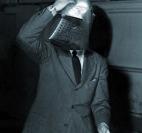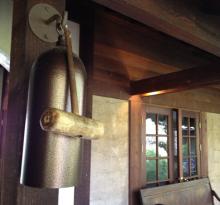
I love what Swiss artist Thomas Hirschhorn has to say about being an artist.
"Doing artwork is not an escape or a dream. If my work is intense, charged and dense, it has a chance of making a breakthrough - a breach in today’s dilemma, problematic, cul-de-sac and no-exit - of pushing beyond the deadlock of resignation and cynicism...
Art enables me to assert and give form to my own logic in a movement of self-authorization. To me, doing art is an emancipatory act and as such, a necessity."
"This is something essential to art: reception is never its goal. What counts for me is that my work provides material to reflect upon. Reflection is an activity."
Though I am no expert on Thomas Hirschhorn, I am intrigued and moved by his work. It seems clear that his art can be described as intervention, a term the art world throws around too liberally in order to gin up otherwise indecipherable and boring artworks.
The artistic impulse is not simply to express, but also to communicate, to enlighten, to inspire, and Hirschhorn's work performs all four functions. Add in another - provoke. His methods are varied, but often result in community-based, highly accessible installations and happenings that disrupt the status quo, usually positively. Even his gallery exhibitions intervene in the typical visitor's attempt at non-committal observation. I saw a show of his at the Gladstone gallery in New York last winter, called De-Pixelation, and found myself troubled by the content of large scale photo collages juxtaposing fashion magazine cut-outs with street photos of the gruesome aftermath of bloody demonstrations and terrorist acts. Hirschhorn's twist was to leave the images of mutilated bodies almost entirely untouched; and to pixelate the glamourous fashion models.
I was initially incensed at what appeared to be a casual exploitation of the spectacle of death and a cheap pairing with the world of glamour, until I read his explanation of the installation (on a sheaf of papers handed to me by a helpful gallery assistant). As I read, I began to realize how this body of work fit into his larger oeuvre, and saw his usage of de-pixelation, his exploration of 'the political power of the pixel', as an adept transfiguration exposing this time-worn practice by media and governments ('the authority') intent upon obscuring the dark side of world events, diminishing it, and manipulating opinion. Stark images of real world struggle and death do not sit well with TV audiences or with voters who might resist if they knew the truth. Hirschhorn's work exposes the vulgarity in this ellipsis. Hirschhorn believes that the pixels 'open an abstract space in order to reach what happens in this collage'. He is relentless in his pursuit of the real, a difficult entity to pin down, but one you know when you see it.
"When someone has pixelated something they considered too gruesome, in a way they take away my own sensitivity and they put me in a victim situation, that I could be a victim of a picture. What is gruesome today is that all this violence happens every moment every second every day every month every year, and not that we have to look on it. I think there is a lot of hypocrisy in this... So in my work I insist that people be emancipated and look with their own eyes at the reality of the world we are living in."
I wound up conversing with the gallery assistant about the fact that many visitors would not bother to read the accompanying materials and would then miss the pungency of Hirschhorn's argument. He agreed. And this does point up an issue with a great deal of contemporary work; it can remain elusive or opaque to those who aren't motivated to understand.
Another of Hirschhorn's installations took place in a Bronx housing project called Forest Houses. The building of it can be seen as again employing one of his favorite artistic practices - collage, or in this case, more precisely, the juxtaposition of diverse cultural materials. Hirschhorn uses inexpensive, non-art materials like photocopies, brown packing tape, plastic wrap, spray paint. The Gramsci Monument was in fact a sort of anti-monument as it was temporary, and in reality a months-long event situated in a sprawling plywood construction that included a library, lecture porch, and other educational elements. Antonio Gramsci, an Italian Marxist imprisoned by Mussolini, wound up in prison for half his life and spent his time in deep thought about the state of society. Hirschhorn's channeling of this major thinker was an earnest attempt to educate a community not previously exposed to his work.
Accordingly, Hirschhorn states that his big challenge is to engage an atypical, non-exclusive audience - one outside of the typical 'cultured' audience, or an audience whose culture may be unknown to him. Gramsci's quote that "Every human is an intellectual." was emblazoned on spray painted sheets hung from windows in The Forest Houses. Although some critics dissed his Monument as a form of exploitation, for Hirschhorn it was an honest effort to alter the dialogue and upset the cultural 'hegemony' which has tended to keep less educated communities out of the discussion. In fact the community heartily endorsed his work, did much of the building, and in the end decided he wasn't white, he wasn't European, he was black. I would hope this honorary status felt to him like he had achieved his goal of reaching out of his own world-view into a broader one. But I sense he just saw it as another coup for the real muscle of Art, for the causeof Art - building new bridges.

















